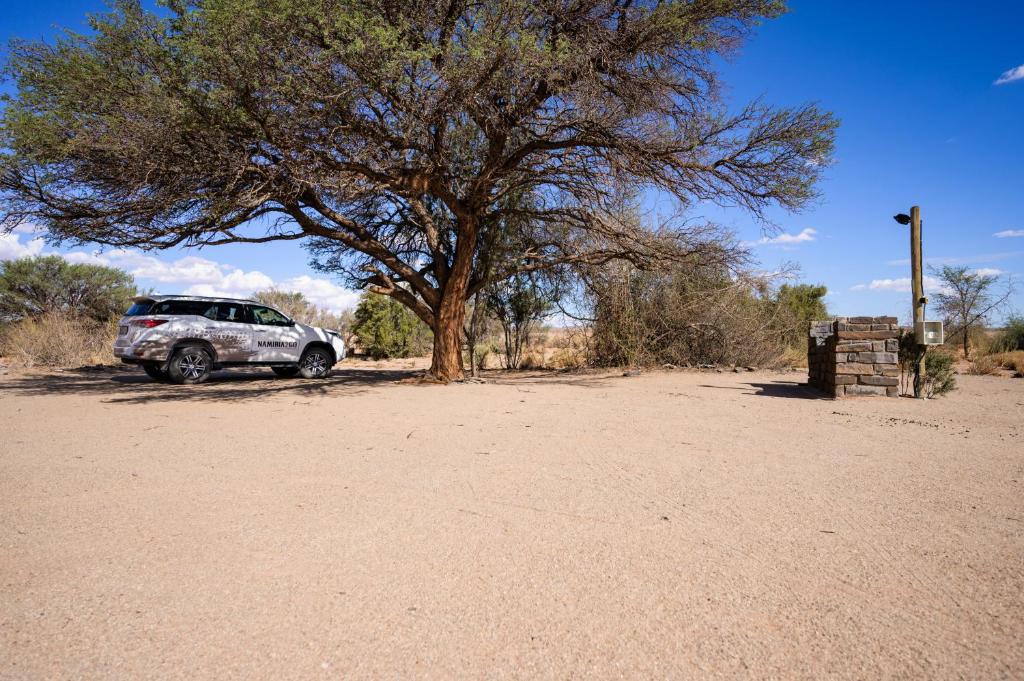Namibia, a country of stark contrasts and immense natural beauty, offers travelers more than just stunning landscapes and wildlife. It is a land steeped in history, where the remnants of once-thriving communities now lie silent, telling stories of ambition, prosperity, and the relentless passage of time. Beyond the famous national parks and luxury lodges, there exists a hidden dimension to Namibia—a realm of abandoned towns and forgotten regions that provide a fascinating glimpse into the country’s past. This article explores these ghost towns, each with its unique narrative, offering a journey through Namibia’s rich historical tapestry.
Kolmanskop: The Vanishing Mirage of Diamonds
Situated deep within the Namib Desert, Kolmanskop is a ghost town that once epitomized the frenzy of the diamond rush in the early 20th century. The discovery of diamonds in the area led to a sudden influx of wealth, transforming this remote desert region into a bustling mining town. At its peak, Kolmanskop boasted a hospital, a ballroom, a power station, a school, and even an ice factory—an extraordinary luxury in the desert.

However, the prosperity of Kolmanskop was short-lived. As diamond deposits dwindled and richer mines were discovered elsewhere, the town’s population rapidly declined. By the 1950s, Kolmanskop was abandoned, leaving behind a collection of grand buildings slowly being swallowed by the encroaching desert sands. Today, Kolmanskop is a popular tourist destination, offering a hauntingly beautiful glimpse into a bygone era.
Walking through the sandy streets of Kolmanskop, visitors are transported back in time. The town’s well-preserved architecture, with its ornate details and European influences, reflects the wealth that once flowed through this desert oasis. The interiors of the buildings, now filled with sand, create surreal scenes where nature and history intersect. Photographers flock to Kolmanskop to capture the unique interplay of light and shadow, where rays of sunlight filter through broken windows and doorways, casting an ethereal glow on the abandoned interiors.
Beyond its architectural beauty, Kolmanskop offers a deeper reflection on the impermanence of human endeavors. The town’s rise and fall are a testament to the transient nature of wealth and the harsh realities of life in the desert. As the surrounding dunes continue to shift, they gradually reclaim the town, creating an ever-changing landscape that serves as a poignant reminder of the passage of time.
Lüderitz: Reflections on Shark Island’s Dark History
Continuing our journey, we reach the coastal town of Lüderitz, known for its unique blend of German colonial architecture and rich maritime history. Lüderitz’s colorful buildings and scenic harbor create a charming facade, but just offshore lies Shark Island, a place with a dark and tragic history. During the early 20th century, Shark Island was the site of one of the most notorious concentration camps established by German colonial authorities.
Shark Island’s history as a concentration camp is a grim chapter in Namibia’s past, marking a period of severe oppression and suffering for the indigenous Herero and Nama people. The island’s harsh conditions and brutal treatment of prisoners resulted in high mortality rates, making it a somber reminder of the atrocities committed during this colonial era. Today, the island is largely abandoned, with only a few remnants of the camp’s infrastructure still visible.
Visiting Shark Island is a sobering experience, offering a stark contrast to the beauty of Lüderitz. The windswept landscape and decaying structures evoke a sense of desolation, prompting visitors to reflect on the dark history of the site. The rusting remains of buildings, once used to confine and oppress, now stand as silent witnesses to the suffering endured by those who were imprisoned there. Shark Island serves as an important historical site, preserving the memory of those who suffered and ensuring that this dark chapter is not forgotten.
Skeleton Coast: The Haunting Remains of Maritime Ventures
No exploration of Namibia’s historical sites would be complete without venturing to the Skeleton Coast, a place renowned for its stark beauty and maritime mysteries. This remote and desolate coastline stretches along Namibia’s northwest, characterized by its shifting dunes, fog-laden shores, and the remains of countless shipwrecks. The Skeleton Coast, named for the numerous whale and seal bones scattered along its beaches, has a long history of maritime misadventures.
The treacherous waters and unpredictable weather conditions have made the Skeleton Coast notorious among sailors. Many ships met their end along this rugged coastline, leaving behind a trail of wreckage that has become an iconic feature of the landscape. Among the most famous shipwrecks is the Eduard Bohlen, a German cargo ship that ran aground in 1909. Today, the ship lies partially buried in the sand, a ghostly reminder of the dangers faced by mariners navigating these waters.
The Skeleton Coast is not just a graveyard for ships; it is also a place of immense natural beauty and ecological significance. The region is home to unique flora and fauna, adapted to survive in the harsh desert environment. The fog that often blankets the coast provides a vital source of moisture, sustaining a delicate ecosystem that includes desert-adapted elephants, lions, and seals. This juxtaposition of life and decay, of thriving ecosystems and desolate shipwrecks, creates a landscape that is both haunting and mesmerizing.
Visitors to the Skeleton Coast can explore the remains of shipwrecks, hike through the shifting dunes, and witness the raw power of the Atlantic Ocean. The area is also rich in cultural history, with ancient rock engravings and archaeological sites that provide insight into the lives of the indigenous people who once inhabited this region. The Skeleton Coast offers a unique opportunity to explore Namibia’s maritime heritage and natural wonders, making it a must-visit destination for adventurous travelers.
Karasburg: The Quiet Echoes of the Railway Era
Heading inland, we come to Karasburg, a town that offers a glimpse into a different aspect of Namibia’s history. While not as well-known as other historical sites, Karasburg played a crucial role during the German colonial period as a key railway hub. The town’s railway station, now a dilapidated structure, was once a bustling center of activity, connecting Namibia’s interior with the coast and facilitating the movement of goods and people.

The railway was an essential part of the colonial infrastructure, enabling the exploitation of Namibia’s natural resources and supporting the growth of settlements. Today, the rusted tracks and abandoned locomotives stand as relics of this bygone era. The sight of these once-powerful machines, now left to the elements, evokes a sense of nostalgia and reflection on the passage of time.
Karasburg itself, with its modest architecture and quiet streets, contrasts sharply with the grandeur of other historical sites. However, it provides an important perspective on the everyday lives of those who lived and worked in this remote part of Namibia. The town’s abandoned buildings, some adorned with faded advertisements from a different era, offer a glimpse into a simpler time, making Karasburg a charming and often overlooked destination for history enthusiasts.
Windhoek: The Capital’s Complex Legacy
Our journey through Namibia’s historical landscapes concludes in Windhoek, the country’s vibrant capital. Windhoek is a city of contrasts, where modernity meets colonial history. The city’s architecture reflects this blend, with German, British, and indigenous influences evident in its buildings and layout. Windhoek is not a ghost town, but it offers a rich tapestry of history that provides insight into Namibia’s journey from a colonial territory to an independent nation.
One of Windhoek’s most iconic landmarks is the German Lutheran Christuskirche, a beautiful church built in the early 1900s. Its distinctive architectural style and central location make it a focal point of the city. Nearby, the Alte Feste, a former military fort, now houses the National Museum of Namibia. The museum offers a comprehensive overview of Namibia’s history, from pre-colonial times through the colonial period and into the modern era.

Windhoek’s history is marked by the country’s struggle for independence and its efforts to reconcile its colonial past with its present-day identity. The city serves as a microcosm of Namibia’s broader narrative, highlighting the challenges and triumphs of a nation emerging from the shadow of colonialism. Windhoek’s vibrant culture, bustling markets, and diverse population make it a dynamic and fascinating place to explore.
Conclusion: A Journey Through Namibia’s Historical Tapestry
Namibia’s ghost towns and abandoned regions are more than just relics of the past; they are windows into the country’s rich and diverse history. Each site, from the diamond-studded sands of Kolmanskop to the eerie shipwrecks of the Skeleton Coast, tells a unique story of human ambition, resilience, and the inexorable passage of time. These places remind us of the impermanence of human achievements and the enduring power of nature.
Exploring these historical sites offers a deeper understanding of Namibia’s complex history and cultural heritage. Whether you are drawn to the stark beauty of the landscapes, the haunting remains of forgotten towns, or the vibrant life of the capital city, Namibia’s ghost towns and historical sites provide a compelling journey through the echoes of the past. This journey not only enriches our appreciation of Namibia’s history but also connects us to the broader human experience of striving, thriving, and enduring against the odds.


